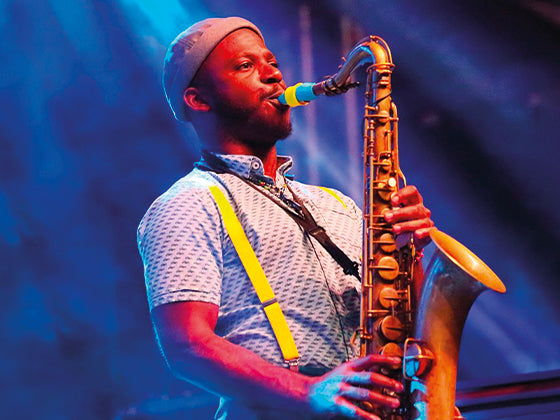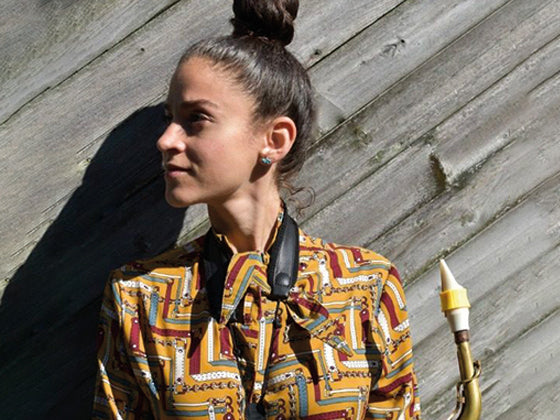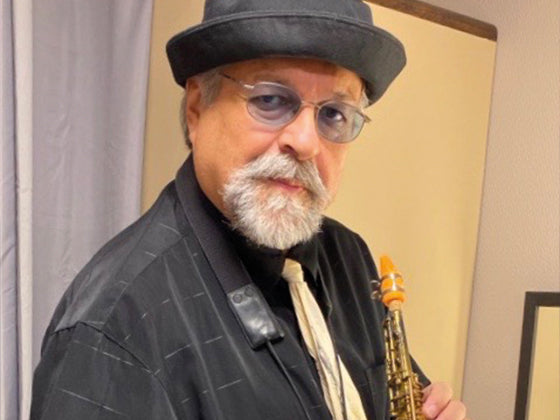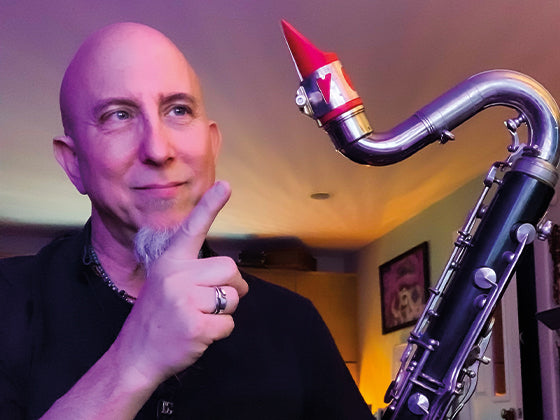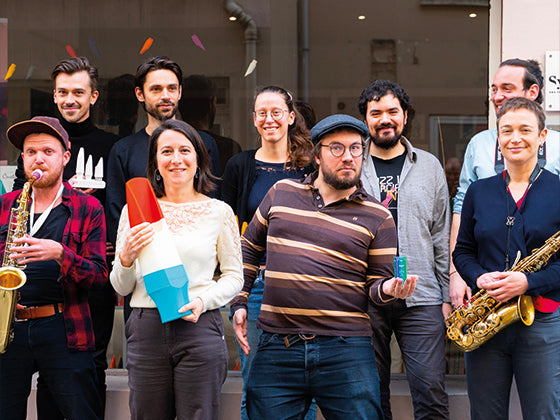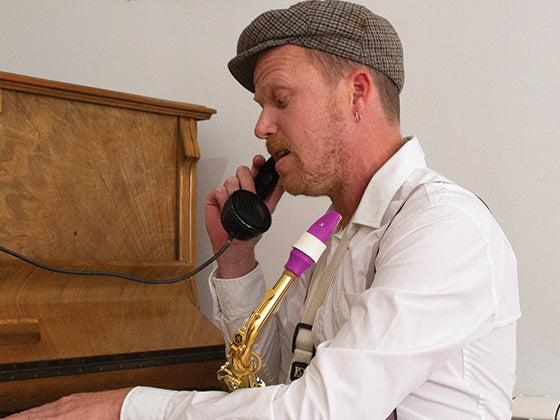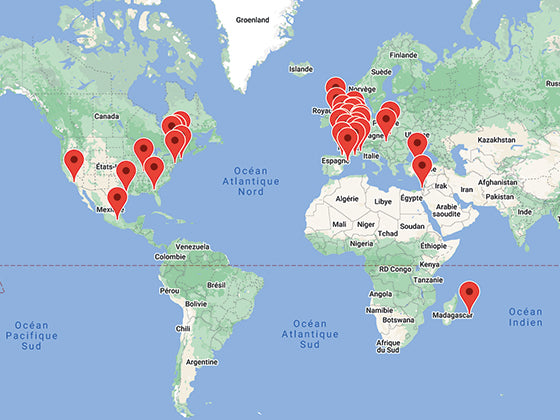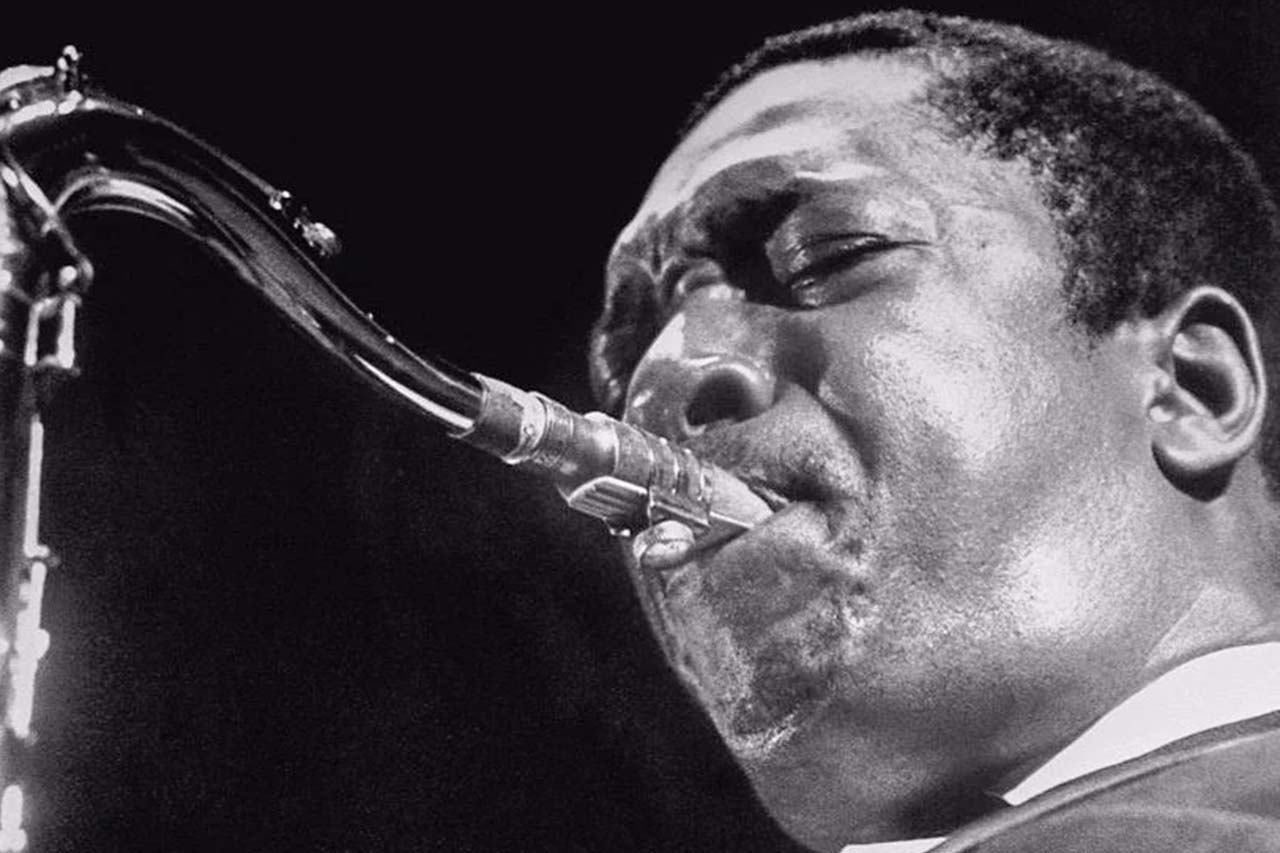Psycho-what?
Psychoacoustics is the study of the perception of sound. This field, somewhere between physics and psychology, is focused on the way our auditory system perceives sound waves, and the way our brain understands them. Why do we perceive some sounds to be louder than others? What is the pitch of a sound? How do we define the timbre of a musical instrument? Psycho-acousticians provide answers to these questions in an experimental way, by conducting tests on listeners and studying the way they describe different sensations.

A typical test - judging dissimilarity
-
The researcher makes a “playlist” of 15 sound recordings (for example, different musical instruments playing the same note).
-
The researcher calls 40 volunteers for the tests: each person listens to the 15 recordings, two at a time and must tell us how similar they are, and describe them with words.
-
The researcher analyzes the results and compares them to the physical signals (composition in frequencies, temporal envelope…) to draw conclusions on how this type of sound is perceived.
These methods come from experimental psychology and are coupled with statistical analysis. The typical pattern of a psychoacoustic method is illustrated in the picture below. In this example, we are looking for proximity and dissimilarity links between several sound signals (A, B, C and D) by using the judgement of a group of listeners.

Verbal description
Throughout history, we have developed a precise language and more or less reached a consensus on how to describe what we see (colours, forms, textures…). Yet we have difficulties in describing auditory sensations with words. The German physician Hermann Von Helmholtz was one of the first scientists who tried to establish links between different sounds of musical instruments and acoustic variables. Since then, lots of researchers have become interested in this topic, and the study of how timbre is being perceived remains a vast topic of research today.
Read also the article : Comment distinguer un sous-marin russe d’un calamar géant ? La description des sons et ses applications quotidiennes.

What is the connection with musical instruments?
The previous method, as well as similar methods of analysis, can be used to study the way that musicians perceive the timbre of musical instruments. A very well-known example in the world of research is the range of timbre by Stephen McAdams.

When applying the previous pattern to sound signals corresponding to the same note being played by different musical instruments, McAdams could re-build proximity relations that our brain establishes between the timbre of these instruments. No fewer than 88 musicians took part in the experiment!
These two sounds are :

When hearing the 18 sounds of the study two at a time, each listener indicated the differences between the extracts. The statistical analists identified 3 main criteria which we use when identifying and differentiating sounds: the attack (the beginning of the sound), the spectral centroid, more often called “brightness”, and the spectral flux, which is linked to the richness of the sound.
Can this study be applied to the saxophone?

The study of McAdams was focused on the musical timbre in general, and does not include any saxophone sounds. This kind of study cannot be practised with a lot of sounds if we do not want the listeners to get tired, and if we want their answers to be meaningful. The saxophone is the subject very few scientific studies. Some studies, such as that of Jean-François Petiot in 2013 or of Arne Nykänen in 2015, have used psychoacoustic methods to characterize the relationship between the timbre of the instrument and the reeds, or the body of the saxophone.
Psychoacoustics at Syos
At Syos, we are always studying the sound of the saxophone using various psychoacoustic methods. It is an essential tool for the Sound Shaper (for more details, read: Syos jobs : Sound Shaper), who conducts experimental studies with saxophonists, professionals as well as amateurs, to determine the links between different sounds and mouthpiece geometries. You can see what an experiment looks like in the Lab section:
And if you are interested, you yourself can take part in an experiment, make an appointment and join us for a session in Paris' 11th arrondissement:




